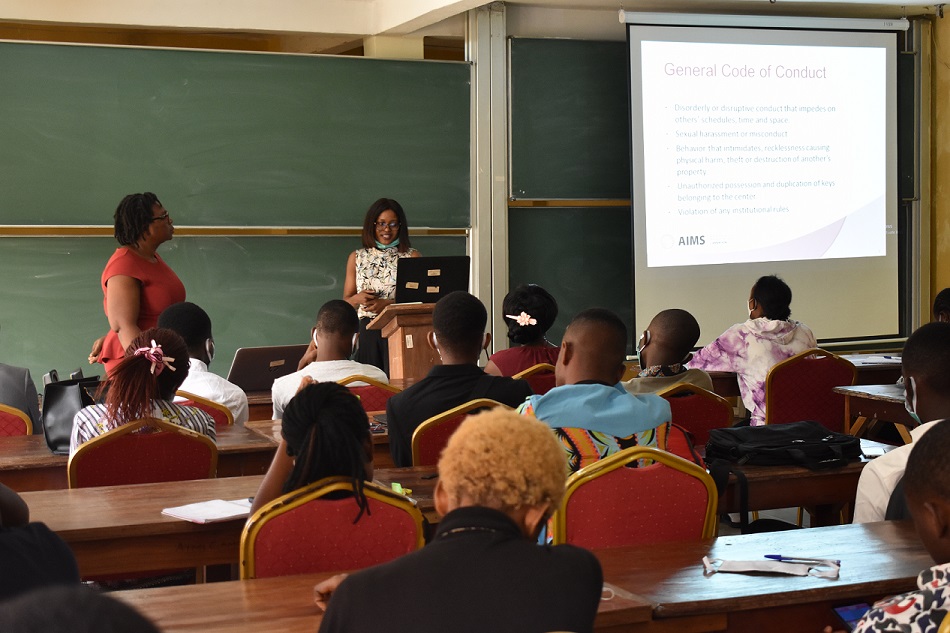Sixty new students, 45% of whom are women, have begun arriving at AIMS Cameroon’s campus in Bota, Limbe, this week to take a 10-month Master’s Degree course in Mathematical Sciences.
The 2021-2022 Cohort comprises 40 Cameroonians and 20 international students from Chad, the Democratic Republic of Congo, Egypt, Ethiopia, Ghana, Kenya, Nigeria, Burkina Faso, Sudan, and Zambia.
The 60 new students have been enrolled in the three new streams of the Structured Master’s Degree Program. While 22 students will study Fundamental Science, 17 will study Data Science, and 21 students chose the Climate Science stream.
Meanwhile, preparations are going on at AIMS Cameroon’s Centre of Excellence to receive the new students. During an upcoming orientation meeting, the students will be introduced to AIMS Staff and given guidelines on the institution’s policies, code of conduct and procedures, and information on the facility, logistics, safety, and security to make their stay on campus an enjoyable one.
AIMS tuition, study materials, and housing are fully funded through a generous scholarship. Its residential nature allows more contact time between lecturers and students than is available in a typical university setting.
Students typically study two subjects for three weeks each, with each day comprising morning lectures followed by problem-solving and computing sessions each afternoon. Additional tutorials and special classes are held in the evenings when students also usually complete their assignments. AIMS Cameroon is a bilingual institute (English and French), and we have students, tutors, and lecturers from various nationalities. All lectures are in English only. Language training is offered in English and French.
Students and tutors of AIMS Cameroon reside on campus at Crystal Garden. They occupy single rooms with a communal living space and laundry facilities.
At AIMS Cameroon, students also get the opportunity to build relationships with one another over play, enabling them to strengthen their thinking and appreciation for a difference in thought processes■

